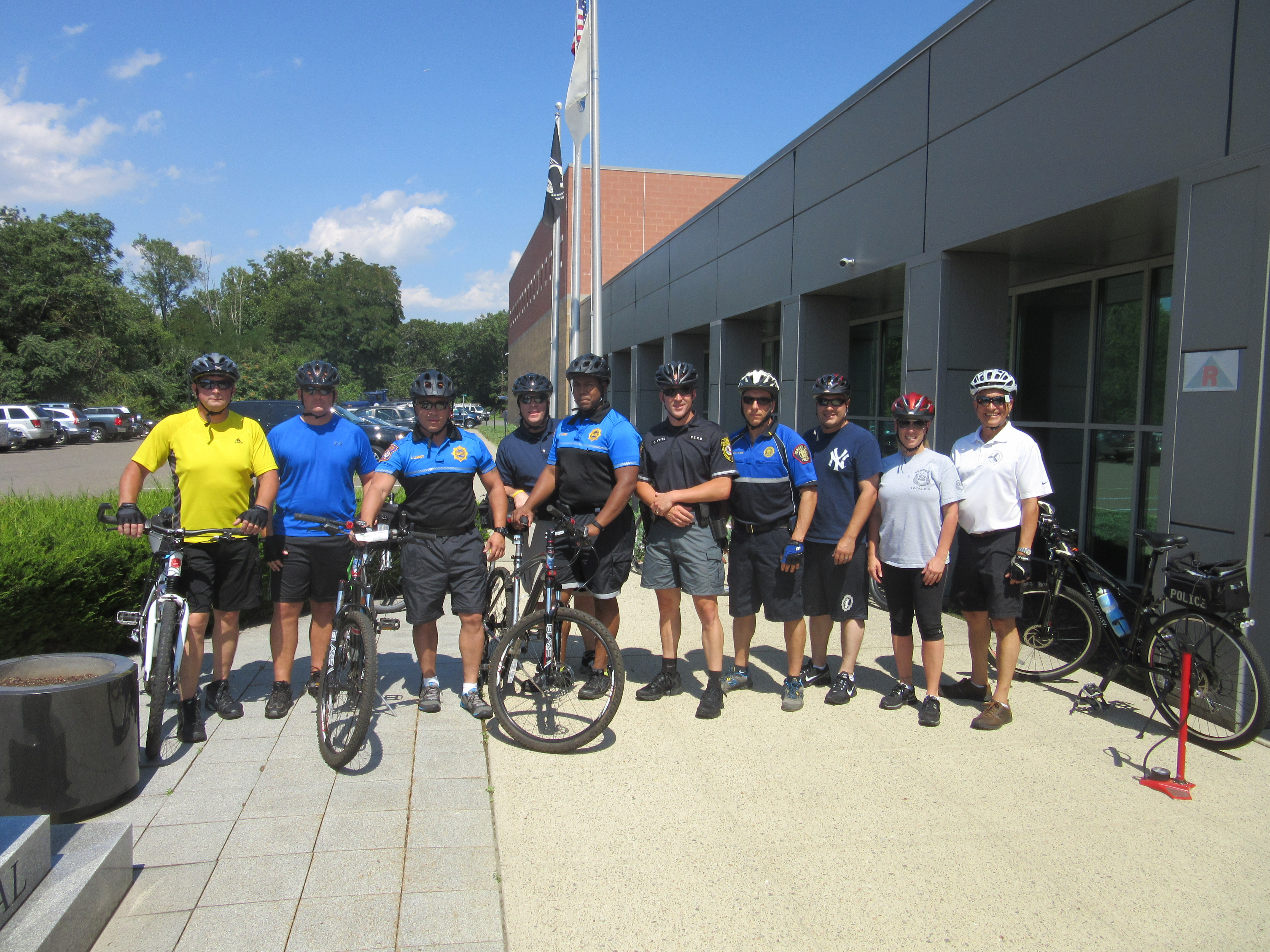The law enforcement community is a critical partner in bicycle safety and education. Police efforts can make a significant contribution in building our communities’ ability to guarantee that all road users are treated equally, and that bicyclists are afforded the same rights and are held to the same responsibilities as all vehicular traffic.
To that end, These Guys has built a course specifically for law enforcement officers. The course includes both classroom and on-bike experiences. In the classroom, discussion of the “three E’s of traffic safety” (engineering, education, enforcement), plus newer E’s (equality, encouragement and evaluation), is facilitated by League Cycling Instructors (LCIs). The class was developed in a collaboration between bicycling instructors and law enforcement officers to bring both sides into the discussion.
Classroom modules
Some of the topics covered are:
- Traffic law, definitions and application: What are the key portions of traffic law that should be top-of-mind when dealing with bicyclists?
- Traffic law, inconsistencies: Where are the potential problems in the motor vehicle code?
- Engineering solutions: The good, the bad, and the ugly.
- Education solutions: What do we teach citizens?
- Common cyclist infractions: What laws are bicyclists most likely to break?
- Common motorist infractions: What laws are motorists most likely to ignore/be ignorant of as regards bicyclists?
- Common pedestrian infractions? Which laws are they aware of?
- Bicycle crash investigation: What can you learn from the bike, even if the rider is not present? What should you look for (and where) to gain insight into the factors and behaviors that led to the crash?
Our experience demonstrates that many statutes in motor vehicle law are unclear, and they may be interpreted differently by reasonable people. Those differences are explored, and officers are challenged to see bicyclists’ actions “from the saddle,” and pedestrians’ actions “from the sidewalk,” rather than from behind the steering wheel.
On-bike Modules
The on-bike portion expands that challenge. It includes two major components: hazard avoidance maneuvers and a road ride. The hazard drills show officers how citizens can and do communicate with motorists by their actions, and how they are trained to avoid dangerous moves by motorists. The road ride is crafted to include low- and high-density roads, with and without infrastructure (as available, and custom-designed for each site). It also includes a segment on the pedestrian’s view. The ride helps officers understand traffic law with new eyes (that is, from someplace other than from the motor vehicle), bringing a different perspective to the law’s importance and application.
Logistics
The classroom modules require half a day of instructional time. This portion can accommodate any number of officers. The on-bike portion requires half a day as well. It is done in smaller groups, however, to allow time for instruction in the hazard drills with adequate monitoring and safety. The course is typically held at a police academy with attendees from multiple local agencies.
Audience
Anyone working in traffic is a candidate to attend the course. It was initially discussed as an opportunity for traffic patrol officers, not bike patrol. Over the past few years, we have learned that the course is equally well-suited for both groups. Why? Many bike patrols are only utilized at special events, and assigned officers may only get out on the bikes a few times a year. Thus, their understanding of traffic law “from the saddle” is typically not different from that of their colleagues. Our evaluation data show there is little difference between bike patrol and traffic patrol officers in knowledge of traffic law as it applies to bicyclists or pedestrians.
